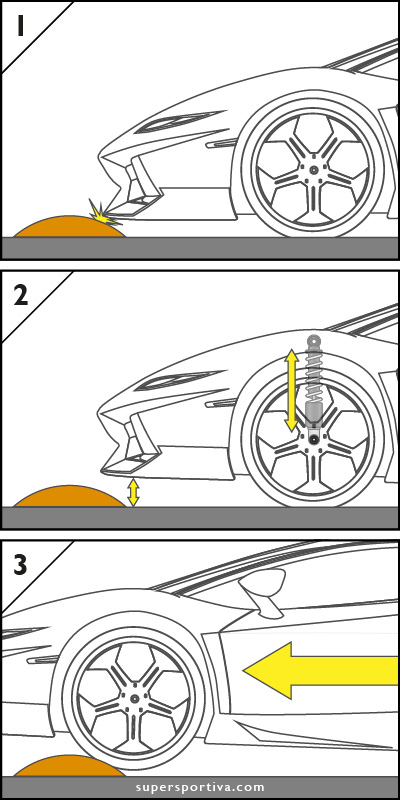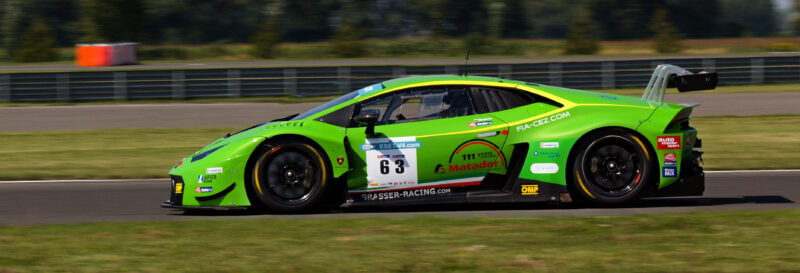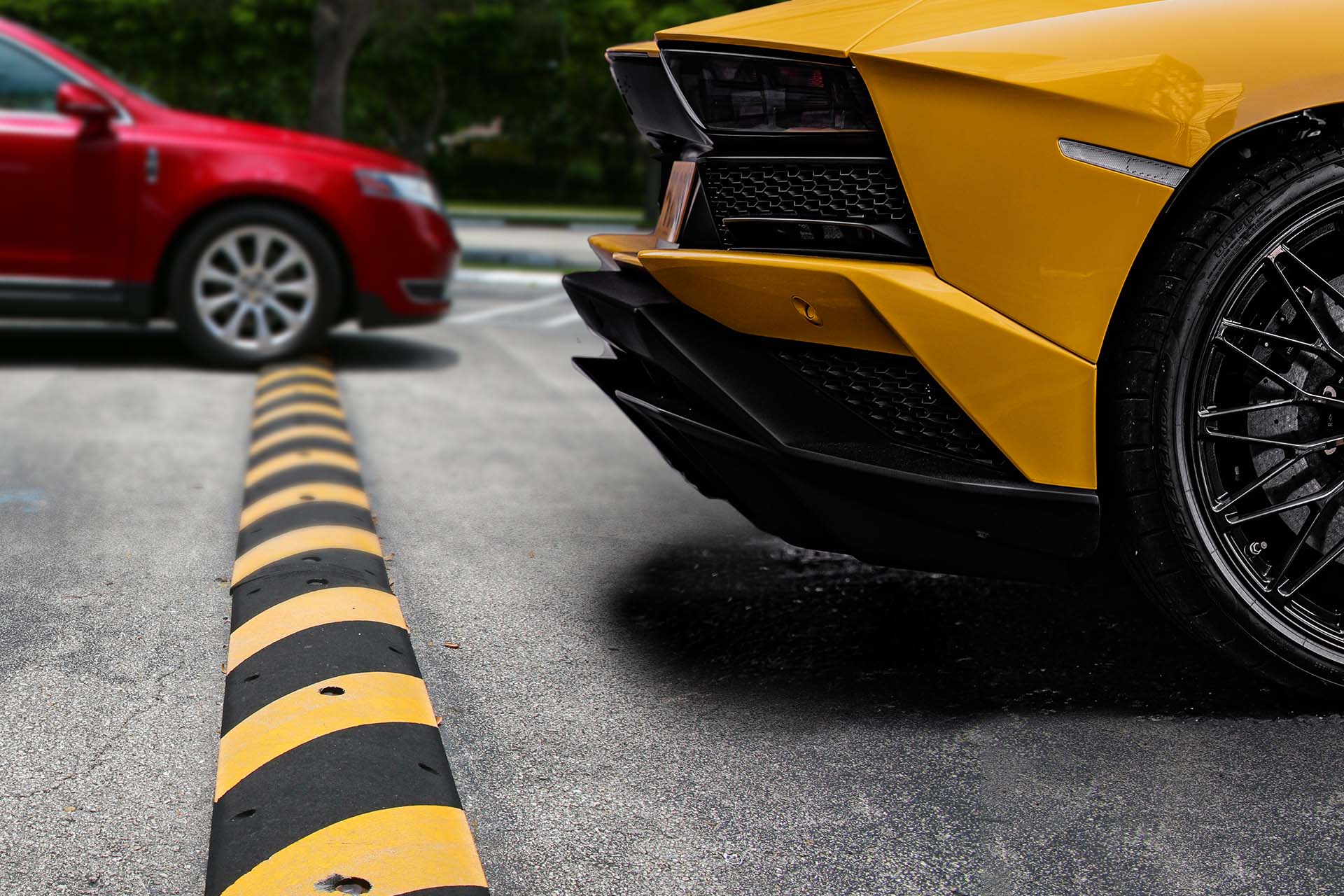Photo Credit: Combination of photos By kthx1138 and Radu Daniel. Photoshop work by Colin Finkle
Yes! Newer Lamborghini models can go over speedbumps easily thanks to front-axle lifting systems.

Supercars are low and have bodywork only a few inches from the ground for optimal performance and aerodynamics. But it presents a problem when trying to go over a speedbump; no one wants to smash their front splitter on the Lamborghini, Ferrari, or Bugatti on a piece of asphalt or rubber. Can supercars go over speedbumps?
Modern supercars, such as Lamborghinis, can easily go over speedbumps using their front-axle lift system. This feature can lift the front suspension, and thus the front bumper, at the push of a button. It is not easy to go over speedbumps without damage in older supercars, but it is still possible with some tried-and-true techniques.
How do supercars go over speed bumps?
Modern technology has made speedbumps and inclines an issue for only old supercars.
Two of the most frustrating obstacles when driving a supercar from the 70s and 80s around a city were speedbumps and inclines. The lower bodywork of the scrape along the asphalt.
Scrapes from speedbumps can be a problem in sports cars or low cars in general. Fast vehicles are designed to have the center of gravity as low as possible, resulting in low ground clearance.
Supercars since the mid-90s have been fitted with front-axle lift systems which increase ground clearance at a push of a button. The use of these lift systems is sometimes called a nose lift.
Now, when supercars come upon a large speedbump or an incline, the driver presses a button on the dashboard, and the front suspension raises. Now the car can easily traverse the obstacle with no damage.
The only issue is that front-axle lift systems can be expensive to replace if either the lifter fails or the front shocks need to be replaced.
Technique to get across a speedbump in a supercar without a lift system.
Alternatively, supercars can approach speedbumps at an angle.
Supercars, or low cars in general, can go over speedbumps at an angle. The angle allows one wheel to lift the vehicle and bodywork before fully over the speedbump.
To do the angle technique to go over a speedbump in a low car:
- Make sure there is no oncoming traffic.
- Approach the speedbump with the low vehicle on the right side of the lane.
- Turn the steering wheel to the left.
- Let the car turn and get the passenger side front tire to go up the speedbump.
- Straighten the steering wheel and drive the car straight but at an angle relative to the speedbump. Safely go into the oncoming lane if you need to.
- Only after all four wheels go over the speedbump, straighten the car out and drive down the road.
With that technique, the wheels will go across the speedbump one at a time, and the bodywork should not be scraped or damaged. Some speedbumps are too aggressive for this technique to work and should be avoided.

Why are Lamborghinis so close to the ground?
A Lamborghini is so close to the ground so it can corner better thanks to a low center-of-gravity and aerodynamic downforce.
A crossover SUV, even the Lamborghini Urus, is optimized to go around town and has plenty of ground clearance to go over speedbumps, curbs, inclines, and potholes.
A supercar, like the Lamborghini Huracán or Aventador, is optimized to go around a race track as fast as possible. It only has enough ground clearance to handle the bumper strips on the corners.

Low Center-of-Gravity
A car needs to go around corners and transition turn-to-turn as quickly as possible to go fast around a track. A low center-of-gravity helps the supercar’s handling by reducing weight transfer under the g-forces from the corner and keeping all four wheels planted.
The easiest way for engineers to lower a car’s center-of-gravity is the lower the body relative to the wheels. This makes the car low-hung and stylish but comes at the cost of ground clearance.
Better Aerodynamics
The other benefit for supercars being low is aerodynamics.
A low car isn’t necessarily more aerodynamic than one that sits higher up. Aerodynamic drag is affected by the car’s shape, area, and bodywork design, but not the ground height of the vehicle.
Supercars are low for aerodynamic downforce. The engineers want as little air flowing under the car as possible, and they direct all the air above the car. The purposeful flow of the air can create a pressure differential: low air pressure under the car and high pressure above the car. This sucks the car down on the road.
That aerodynamic downforce is necessary for cornering and top-speed safety. The extra push down on the tires makes them stick to the ground more and thus improve handling. At top speed, air under the car can cause the front wheels to lose contact with the road and even flip the vehicle; either can cause a catastrophic accident at 200+ mph.
A low car keeps as much air above and as little below as possible, making traveling near its top speed much safer.

Leave a Reply